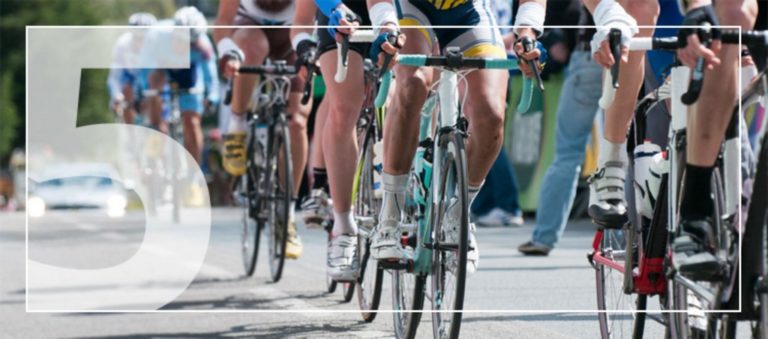As COVID-19 vaccine rates go up in many states across the country, some state or municipal governments are loosening restrictions on live events. According to Mayo Clinic, 60.8% of California’s population is fully vaccinated and 66.1% of all New York residents have had their second shot for at least 14 days as of this post. Across the entire United States, 67% of all those eligible to receive the vaccine (everyone aged 12 or older) have been inoculated, per the CDC and Census Bureau. In Canada, regional and local governments are also lifting capacity restrictions for many events. Events may not go back to how they were pre-pandemic — at least, not for some time. Both event attendees and organizers must be aware of adjustments they should make to control the spread of the virus, and set their expectations for event access control accordingly.‌
12 Best Practices for COVID-19 Event Precautions
Event access control has become more important than ever for event planners. Event organizers who want to plan live events post-COVID will have to keep safety control best practices in mind, such as those listed below.
1. Socially-Distanced Floor and Parking Lot Plan‌
Social distancing is now a must at all indoor and outdoor events. Set up your floor plan so that attendees aren’t forced to stand or sit close to one another throughout the event.
If it’s a festival, set up booths more than 12 feet apart so attendees can walk by on all sides without coming into close contact with each other. For seated events, block off every second or third seat and only make exceptions for people arriving together.
When in doubt, add more space to your floor plan so attendees and staff don’t feel cramped. You want everyone to be able to enjoy your event at a safe distance from each other. For large events, consider having enough staff or volunteers to provide friendly reminders for attendees to adhere to social distancing guidelines.
Social distancing should be a concern both inside and outside the event. If your venue provides parking, block off every other parking space to lower the chances guests will bump into each other as they get into or out of their cars.
2. Tickets Using QR Codes for Verification
For ticketing, consider using QR codes or anything you can scan for registration confirmation. Don’t allow guests to print out their tickets and hand them to you upon entrance, as this contact could help spread COVID. Going as contactless as possible is always best.‌
Using QR codes is the easiest and most effective way to confirm entrance because neither you nor your guests need extra hardware to scan a QR code.
Using technology like the Events.com EveryHere™ app makes on-site check-in a seamless experience for you and your attendees.
3. COVID Certificate Checks‌
Many countries have now made available certificates related to COVID-19 status. They will usually confirm one of the following:
- Full vaccination
- Negative COVID-19 test within the last 48-72 hours
- A recent case of COVID-19
Ask attendees to present one of these certificates before they’re allowed inside your event. Check with your local public authorities about what kind of COVID status certification is available, and let attendees know ahead of time you’ll be checking these certificates.
Need help with the logistics of managing COVID Certificate Checks at your event? Drop us a line at help@events.com or check out some of our partners in our marketplace.
4. Separate Entrances and Exits‌
Part of keeping event attendees socially distanced involves controlling the flow of the crowd. To this end, you should not let people enter and exit the event from the same door or entryway. Designate an entrance and a separate exit so there are no bottlenecks and people can walk freely into and out of your event.‌
For festivals, trade shows, or other events where guests will be walking around, try to establish a set path for them to follow as much as possible. Of course, you can’t force people to walk in a straight line the entire time they’re at a festival. But you can make suggestions and assign a separate entrance and exit to help steer them in the right direction.
5. Limited Occupancy in Smaller Areas‌
Your event might include breakout rooms such as:
- Bar area
- Conference rooms or small meeting spaces
- Restroom waiting area
- Smoking sections
It’s your job to limit the number of people allowed in these areas, as there’s less room for guests to socially distance themselves.
You may have to assign staff members to these areas to enforce rules about limited occupancy and social distancing. Putting up signs might not be enough to discourage guests from entering a small and crowded space, especially if they want to use the restroom.
6. Staggered Entrance and Exit Times
Depending on the nature of your event, you may have to stagger admission times. For seated performances, guests will arrive at different times anyway — so it’s not as big of an issue. For trade shows or all-day expositions, however, you might consider registering your visitors for different time slots throughout the day and only letting people enter at their designated time.‌ Events.com allows you to offer different types of tickets (general admission, group tickets, VIP, etc.) and also gives event attendees the opportunity to change their ticket or registration type within a certain time frame and for a fee. You can also arrange certain attendee-specific items that are required to be selected in order to choose spaced-out time frames on the event date.
You should also think about scheduled exiting. When a concert or show ends, everyone will want to leave at the same time. To prevent people from getting too close to each other in the aisles or crowding the exit, assign guests an exit time.
Be sure to let your attendees know beforehand that you plan to stagger exits from the event, or they may be unpleasantly surprised when they have to wait to leave.‌
7. Line and Waiting Area Management
If your guests will have to wait in line to get into your event, you must ensure the line remains socially distanced. Take a look at the venue beforehand and keep in mind that the line will likely take up much more space than usual. Leave plenty of space for guests to wait and put markers on the floor or ground to remind them to stay six feet or two meters apart.
Establishing time slots or staggered entry can help reduce the time guests spend waiting in line. Don’t put yourself or your staff in a stressful situation, where you have to scan tickets quickly to keep the line down. You should be paying close attention to health and safety measures at the entrance.
8. Rules for Attendees Traveling from Abroad‌
You may have guests at your event who come from another country or region where the COVID-19 situation is different. For people coming from areas where there are more reported cases of coronavirus, you should take extra precautions.
Ensure out-of-town guests have the proper travel documents — and if applicable, are quarantined before entering your event. Also, keep in mind that it might not be possible for guests from some countries or regions to attend your event at all if you’re trying to follow health and safety regulations closely. ‌
Let your guests know well in advance about your rules for out-of-town visitors. Be prepared to issue refunds if someone has to cancel because COVID cases in their area have gone up and it prevents them from traveling.‌
9. Required Liability Waivers‌
No matter how many COVID-19 event precautions you take for event access control, there’s still a risk your guests could contract coronavirus. You don’t want someone to hold you or your organization responsible for getting COVID-19, so use event waivers.
State that guests assume the risk of contracting coronavirus by entering your event and ask them to sign a waiver during their registration. You can also ask visitors to sign a safety contract, which affirms that they’ll abide by all the COVID-19 control measures you have in place. A waiver won’t protect you against all liability as an event organizer, although it is a great benefit to have if you ever face a lawsuit.
Events.com can help you provide liability waivers for your events as an attachment in confirmation emails or as a checkbox within the registration process for attendees. Consider requiring your attendees to sign a waiver that states in the terms and conditions that all those in attendance must have a negative covid test and proof of vaccination to attend your event. Participants coming from out-of-state or abroad must have been quarantined for 14 days after traveling. Consider sending a reminder email to all attendees at least two weeks before the event so that they can meet these requirements, as well as any other emails with updates.
10. Contactless Policies
Wherever you can, use contactless technology at your event. Let people register for your event online, and make it possible for them to check in with their phones. Any event materials such as maps or schedules should also be online and accessible through QR codes. If you’re handling payments on-site, use contactless payment options — such as PayPal, Venmo, or Google Pay.
Your guests should know in advance that your event will be contactless, so they can download the relevant payment apps if they plan to purchase something.
11. An Emergency Plan
For an indoor event, you’ve likely put up barriers or partitions to separate staff from guests. You may have designated where guests should walk or stand in certain areas. These barriers will help with event access control and COVID-19 precautions, but they could also be a major hindrance to an emergency evacuation.
Create an emergency plan that incorporates COVID-19 barriers and social distancing. Try to label passageways and procedures as clearly as possible. When there’s an emergency, guests may become more anxious than they would have before coronavirus, which could lead to disorder.
12. Event Security‌ Improvement
If you’re planning to have guests go through security before entering your event, you’ll have to reconsider how you screen people in the coronavirus era. Pat downs and metal detector wands put security personnel too close to guests, compromising safe social distancing space.
The best solution for event security is implementing walkthrough metal detectors. They might require a bigger investment, but you can’t afford to have guests coming into close contact with your staff. Don’t search someone if they set off the metal detector more than a few times, as this will put your staff in too-close contact as well. Instead, you might have to deny that person access to the event‌.
Perfecting Event Access Control During COVID‌
To host a safe, successful, in-person event during a pandemic requires more organization on your part and more cooperation from guests. But if it’s done correctly, and you communicate well with your event attendees, they shouldn’t mind dealing with extra safety control measures.
To learn more about perfecting event access control during COVID, you can check out the updated guidelines about large gatherings from the Centers for Disease Control and Prevention (CDC) in the United States. The Mayor of London’s office has released a large events checklist, too. You can also visit the Events.com COVID-19 Resource Center for more help with planning events and event access control.
Events.com is here to help. Our team of event experts is standing by to help with all your event needs or questions. Drop us a line at hello@events.com or get started creating your event today.







